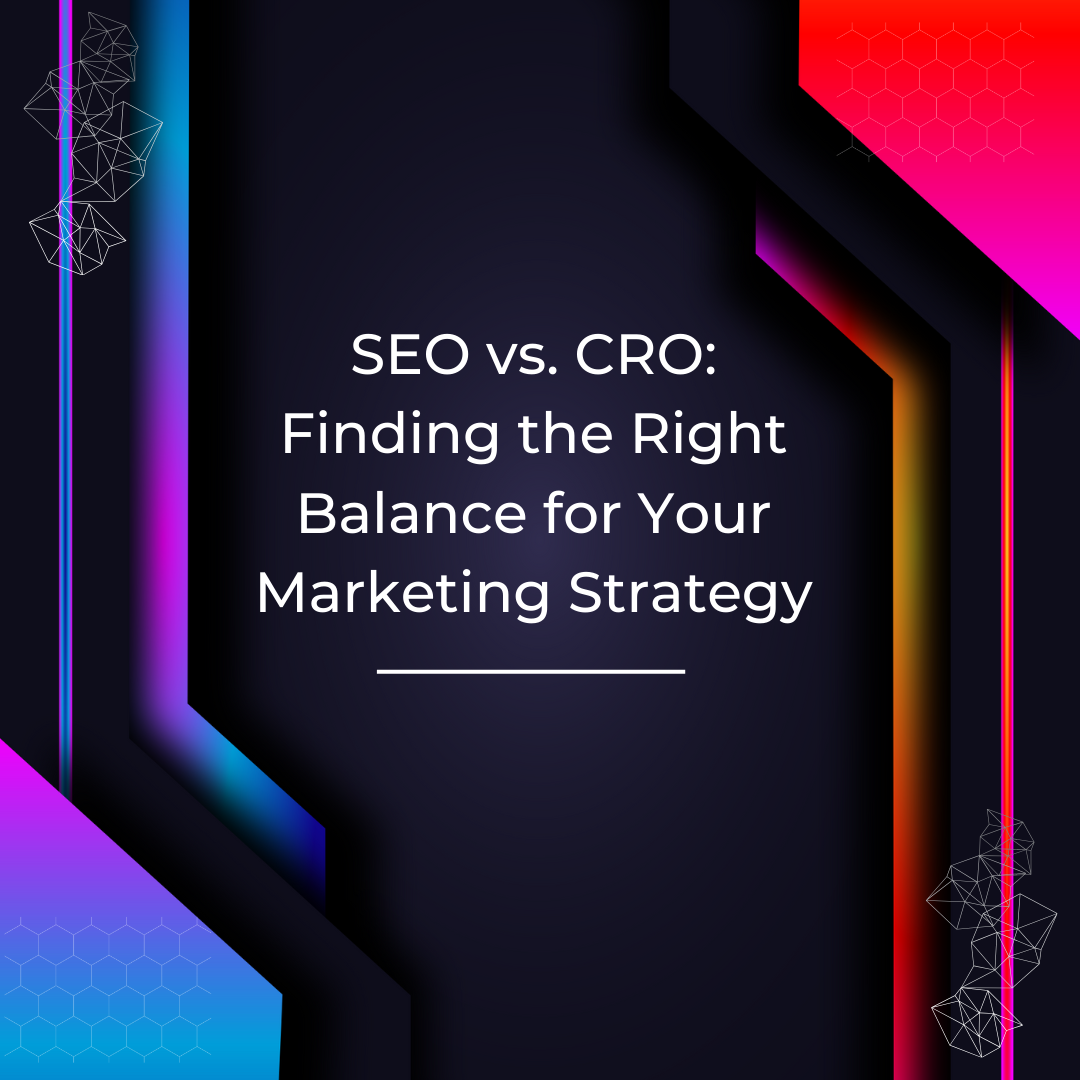Search engine optimization (SEO) and conversion rate optimization (CRO) are two essential components of any digital marketing strategy. While SEO focuses on driving traffic to your website, CRO aims to convert that traffic into paying customers. But which one should you focus on? In this blog post, we’ll explore the differences between SEO and CRO and how to find the right balance for your marketing strategy.
SEO vs. CRO: What’s the Difference?
SEO is the process of optimizing your website to rank higher in search engine results pages (SERPs). The goal of SEO is to drive more traffic to your website by improving your visibility in search engines. This is achieved by optimizing your website’s content, structure, and technical elements to make it more attractive to search engines.
CRO, on the other hand, is the process of optimizing your website to convert more visitors into customers. The goal of CRO is to improve the user experience on your website and make it easier for visitors to take action, such as making a purchase or filling out a form. This is achieved by analyzing user behavior on your website and making changes to improve the user experience.
Finding the Right Balance
While SEO and CRO are two distinct processes, they are not mutually exclusive. In fact, they work together to create a successful digital marketing strategy. Here are some tips for finding the right balance between SEO and CRO:
1. Focus on the user:
Both SEO and CRO are focused on improving the user experience on your website. By focusing on the user, you can create a website that is both optimized for search engines and designed to convert visitors into customers.
2. Optimize for the right keywords:
SEO is all about ranking for the right keywords. By optimizing your website for the keywords that your target audience is searching for, you can attract more traffic to your website. However, it’s important to choose keywords that are relevant to your business and have a high search volume.
3. Create high-quality content:
Content is king when it comes to SEO. By creating high-quality, informative content that is optimized for your target keywords, you can improve your website’s visibility in search engines. Additionally, high-quality content can help improve the user experience on your website and increase conversions.
4. Optimize your website for conversions:
While SEO is focused on driving traffic to your website, CRO is focused on converting that traffic into customers. By optimizing your website for conversions, you can make it easier for visitors to take action and increase your conversion rate.
5. Test and iterate:
The key to finding the right balance between SEO and CRO is to test and iterate. By analyzing user behavior on your website and making changes to improve the user experience, you can create a website that is both optimized for search engines and designed to convert visitors into customers.
How Platinolsol Works for Your Marketing Strategy
At Platinosol, we understand the importance of finding the right balance between SEO and CRO. That’s why we offer a range of digital marketing services that are designed to help you achieve your marketing goals. Our team of experts can help you optimize your website for search engines, create high-quality content, and improve the user experience on your website. Additionally, we can help you track your website’s performance and make data-driven decisions to improve your marketing strategy.
Conclusion
SEO and CRO are two essential components of any digital marketing strategy. While SEO is focused on driving traffic to your website, CRO is focused on converting that traffic into customers. By finding the right balance between SEO and CRO, you can create a website that is both optimized for search engines and designed to convert visitors into customers. At Platinosol, we can help you achieve your marketing goals by providing a range of digital marketing services that are designed to help you succeed.


